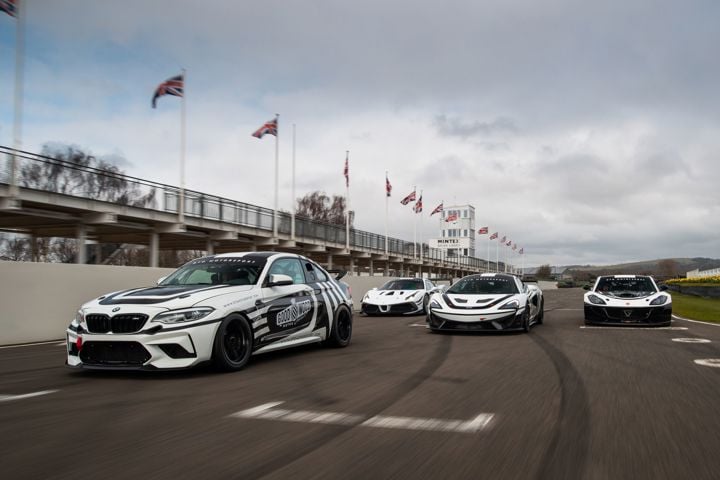John Simister: How can a Mini be worth £50,000?
 John Simister
John Simister
A few weeks ago I wrote about the Mini Remastered by David Brown Automotive, and its heady £75,000 price tag. This got me thinking about what a bargain a very early original-spec Mini can be, even a coveted Cooper S. After all, a super-rare, beautifully-restored 970cc version from 1965 was sold at auction two months ago for just £56,000.
Did you just choke into your morning coffee? I did, when I read that. Back in 1975 a friend bought a 1967 1275S, the speediest version, for £295 and sold it soon afterwards for £250 because the oil pressure was low. I could have bought it and fixed it, but didn't think it worth the effort. If we had only known then what we know now… but on such an impossible wish is the whole classic cars price explosion based.
A few years ago a different friend, who has an enviable knack of identifying the rising stars, bought and had perfectly restored a 1964 970S. The whole thing, buying the car and making it completely proper, cost around half of that auction car's haul. He's happy about this, although it might inhibit the enjoyment of the Mini-Cooper as its creators, and indeed he, intended.
This friend and two others were also the owners of the pre-production Austin Seven, the oldest unrestored Austin-badged Mini in the world and fourth-oldest surviving Mini of any sort, that sold at auction in 2012 for £40,250 despite being so rusty that it was about to break in half. It was more a piece of industrial and social archaeology than a car, its interest and value lying in the way that most of its nuts, bolts and screws were last tightened by workers at the Longbridge factory, and its paint came out of a Longbridge spray gun.
To restore that car would be to lose all that tactile connection with the past, but it would make it usable again. Debate raged over what should be done; the last I heard, its buyer planned to restore it.

I had a chance to be in on the ownership consortium with my three friends, but with my usual financial dim-wittedness, I declined. Mostly this was because, caught up in this sudden enthusiasm for primordial 1959 Minis, I had found one of my own which had the great advantages of being intact and functional. Mine was a long way from the obsessive correctness prevalent in the ancient-Mini community – it didn't even have the vital glass washer bottle (£400 upwards on eBay, although a Kilner jar is near-identical) – but it did have a fine assemblage of period tuning modifications, albeit not actually applied to this particular car in period.
My 1959 Morris Mini-Minor, in Cherry Red, had spent boy-racer time with a big capacity engine and a green/white paint job, but a Yorkshire Mini enthusiast rescued it and restored it back to redness. He reinstated a little 848cc engine, too, albeit overbored to 910cc and given a much freer-breathing cylinder head. This was to make better use of the Shorrock supercharger kit he found for it, originally marketed by Allard. (' "Take it in top!" says Sydney Allard, famous sporting motorist,' went the ad of the time as he talked-up the extra torque that would soon be yours.)
The restorer never quite got the Mini to work properly, although it had obvious potential. Neither did two subsequent owners, but I'm pleased to say that I did. Up to a point, anyway. I got the body re-restored to a better standard, sorted out myriad snags, and for a tantalisingly short time, it was spectacularly fast, its speedometer easily coaxed into a second lap. Then the ageing Shorrock went bang. Actually, it did that twice, and the second time I treated it to a complete, beautifully executed and frighteningly expensive rebuild.
As part of the rebuild, I specified a larger drive pulley to slow the supercharger down a bit. It would reduce the power, which was a pity, but it ensured that the 'charger held together and there was still over 70bhp on tap. In this form, running with Cooper S brakes and Koni dampers and looking almost standard apart from wider wheels and a bigger exhaust pipe, the Mini proved immensely entertaining. People just couldn't believe how quick it was for something so obviously ancient.
We did a Circuit of Ireland tour in it with the Mini-Cooper Register, chasing a couple of genuine works rally cars through the mountain stages, and I had an extremely wet drive home from a Goodwood Revival when the heavens opened. A 1959 Mini not only leaks, it also requires that you drive with the driver's window slid open to reduce the windscreen's misting-up, there being no outside air supply and only a feeble recirculating heater. I was soaked through and the floor was awash.
Other snags included a tendency for the carburettor to ice up on a cold, damp morning, just as happened with early prototype Minis, and a penetrating boom at motorway speeds that my generous application of soundproofing failed to smother. That's why I sold it, really: the noise, the wetness, the ice-blocked induction.
I got a good price, albeit one significantly less than £56,000. And I was pleased that, unlike the £40,250 former barn-find, my 1959 Mini was still very much alive. Do I miss it? Of course I do.
John simister
Mini









